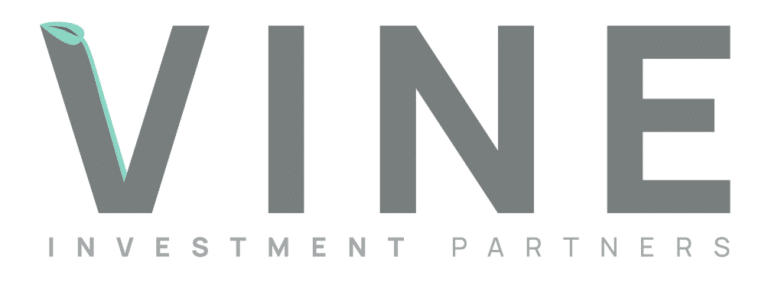As the world transitions to cleaner energy sources, businesses and investors are increasingly drawn to renewable energy projects not just for their environmental benefits but also for their potential to generate significant financial returns. A key factor driving the profitability of these projects is the Investment Tax Credit (ITC), which offers substantial tax savings for businesses and individuals investing in renewable energy systems like solar and wind power.
In this article, we’ll explore how renewable energy projects can be structured to maximize profits through the ITC and other tax credit strategies, highlighting why this approach is attractive to both developers and investors.
What Is the Investment Tax Credit (ITC)?
The Investment Tax Credit (ITC) is a federal tax incentive designed to encourage investment in renewable energy projects by providing a dollar-for-dollar reduction in federal tax liabilities. First introduced in 2006, the ITC has played a critical role in making renewable energy technologies more affordable for businesses and developers.
Under the Inflation Reduction Act (IRA) of 2022, the ITC currently offers a 30% tax credit for qualifying renewable energy projects that begin construction before 2032. This percentage applies to a wide range of projects, including solar panels, wind turbines, geothermal systems, and energy storage solutions. For businesses and investors, this credit significantly reduces the upfront cost of these projects, improving overall profitability.
How Does the ITC Maximize Profitability for Renewable Energy Projects?
- Lowering Upfront Costs
The ITC directly reduces the cost of renewable energy installations by allowing businesses to claim a 30% credit on eligible project expenses. For example, if a company invests $1 million in a solar energy project, the ITC allows them to reduce their federal tax liability by $300,000. This immediate reduction in cost makes it easier for businesses to finance and develop renewable energy projects, leading to higher profit margins over time.
In addition to the ITC, other financial incentives such as state tax credits and utility rebates may be available, further reducing the net cost of these projects.
- Enhancing Return on Investment (ROI)
By lowering the initial capital expenditures, the ITC significantly improves the return on investment (ROI) for renewable energy projects. Businesses can recoup their costs faster, allowing them to
benefit from long-term revenue generated by the project. For example, a solar energy project not only provides tax savings but also reduces electricity expenses or generates income through the sale of excess power to the grid.
In some cases, renewable energy projects can achieve financial breakeven in just a few years, after which they continue generating profit for the remainder of their operational lifespan—often 20 to 30 years for solar and wind installations.
- Stacking Additional Tax Benefits
In addition to the ITC, businesses can take advantage of other tax incentives to maximize profitability. One of the most common strategies is to combine the ITC with Modified Accelerated Cost Recovery System (MACRS) depreciation. MACRS allows businesses to depreciate the cost of renewable energy equipment over a shorter period (typically five years), providing additional tax savings.
This “stacking” of incentives allows businesses to maximize the financial benefits of renewable energy projects. By combining the ITC with accelerated depreciation and other available incentives, businesses can significantly reduce their tax liability and enhance the overall return on their investment.
- ITC “Adders” for Additional Profitability
The Inflation Reduction Act (IRA) introduced new provisions that allow for “adders” to the ITC, which can increase the tax credit beyond 30% in certain circumstances. These adders are designed to encourage specific types of renewable energy projects or practices, including:
-
- Domestic Content Adder: Projects that use a certain percentage of U.S.-made materials can qualify for an additional 10% credit.
- Energy Community Adder: Projects located in energy communities—areas negatively impacted by fossil fuel job losses—can receive an extra 10% credit.
- Low-Income Community Adder: Projects installed in low-income communities may qualify for additional credits.
By designing projects to meet these criteria, developers and investors can increase their ITC from 30% to as high as 50%, further boosting profitability.
How to Structure Renewable Energy Projects for Maximum ITC Benefits
To maximize the financial benefits of the ITC and other tax strategies, businesses and developers must carefully structure their renewable energy projects. Here are a few key considerations:
- Project Financing with Tax Equity Investors
Many large renewable energy projects are financed using tax equity, a form of investment where an investor provides capital in exchange for the tax credits generated by the project. Tax equity investors are typically corporations or high-net-worth individuals with substantial tax liabilities who benefit from the ITC and other tax credits.
By bringing in tax equity investors, developers can secure the financing needed to complete the project while the investors receive the tax benefits. This allows both parties to profit from the project’s success.
- Take Advantage of Bonus Depreciation
Through bonus depreciation provisions, businesses can write off a large portion of their investment in renewable energy equipment in the first year. This upfront depreciation accelerates tax savings, further improving the project’s cash flow and return on investment.
For example, businesses may be able to combine the 30% ITC with 100% bonus depreciation (if available), allowing them to deduct the remaining 70% of the equipment’s cost over a shorter period, maximizing tax benefits.
- Long-Term Power Purchase Agreements (PPAs)
For renewable energy projects, securing a Power Purchase Agreement (PPA) can ensure stable, long-term revenue. PPAs are contracts where a third party (such as a utility or large business) agrees to purchase the energy generated by the project at a fixed rate for a set period, typically 15 to 25 years. This provides reliable cash flow for the project, making it easier to finance and more attractive to investors.
- Location Optimization for Maximum ITC Adders
Project location plays a crucial role in maximizing the financial benefits of the ITC. Developers can strategically site renewable energy projects in energy communities or low-income areas to qualify for additional tax credits. These ITC “adders” can increase the total credit by as much as 20%, further improving profitability and enhancing the project’s appeal to investors.
The Future of Renewable Energy and Tax Credit Strategies
With global demand for renewable energy rising, the ITC remains a critical tool for businesses looking to capitalize on the clean energy transition. As government policies continue to support renewable energy development through tax credits and other incentives, businesses and investors will find numerous opportunities to generate profit while supporting the shift toward a more sustainable energy future.
Conclusion
The Investment Tax Credit (ITC) is a powerful financial tool that can significantly reduce the cost of renewable energy projects and enhance profitability for businesses and investors. By leveraging the ITC alongside other tax credit strategies such as MACRS depreciation and ITC adders, renewable energy projects can achieve substantial tax savings and improved returns on investment.
With careful planning and the right financial structures, renewable energy projects can provide long-term revenue while contributing to the fight against climate change. As the market for clean energy continues to grow, businesses that take advantage of the ITC and other tax credit strategies will be well-positioned to maximize profit and lead the way in renewable energy development.
Our Commitment to Investors
Vine is dedicated to providing transparent, secure, and tax-advantaged opportunities for investors. By partnering with us, corporations can effectively lower their tax liabilities, support clean energy initiatives, and diversify their investment portfolios. As a trusted partner, Vine ensures that all projects undergo rigorous due diligence and adhere to the strict conditions set forth in the Inflation Reduction Act.
If you are a corporate taxpayer looking to benefit from federal tax credits and align your investments with sustainable development, Vine is here to guide you through every step of the process.

Addison Henry, CEO | Vine Investment Partners, LLC


